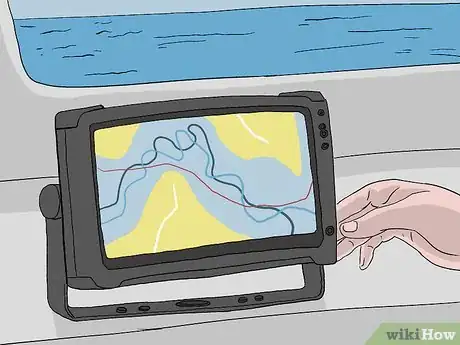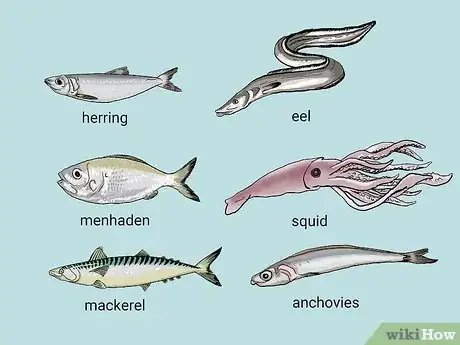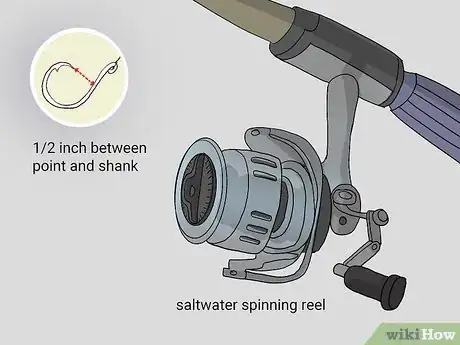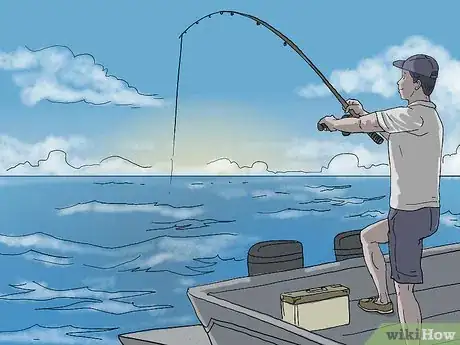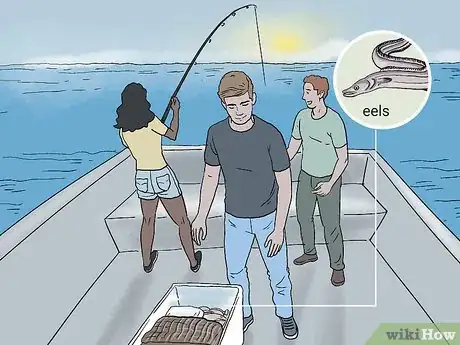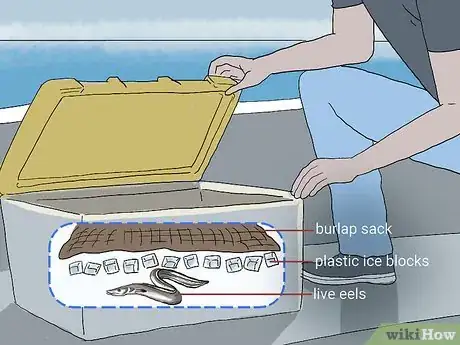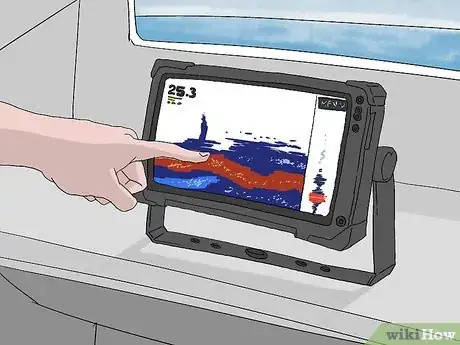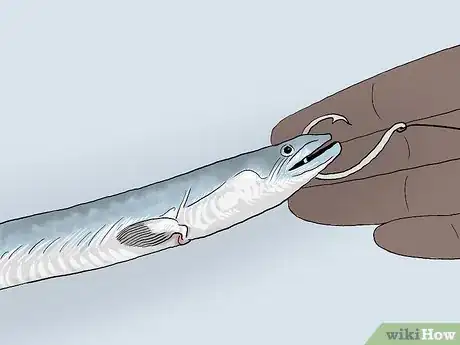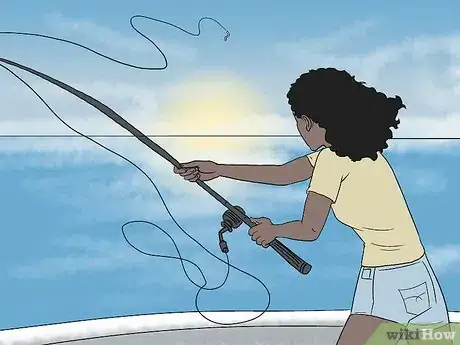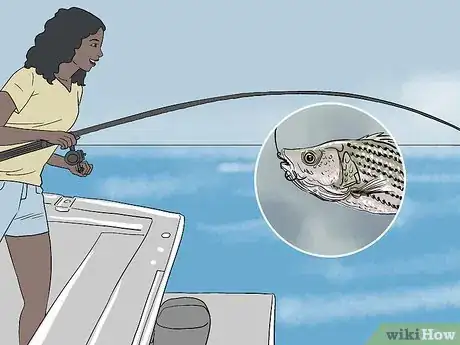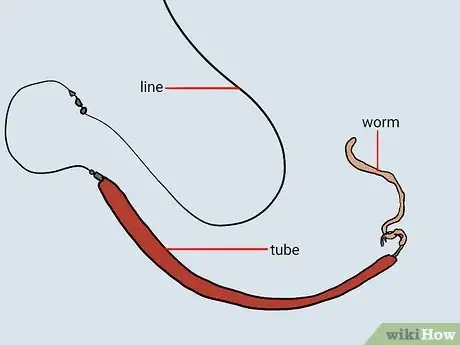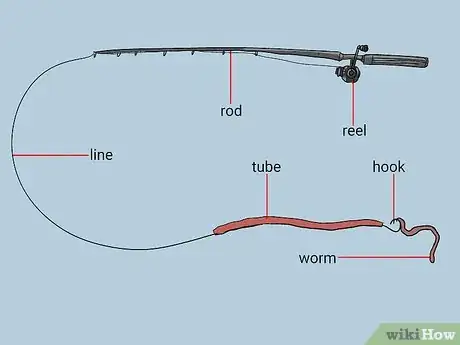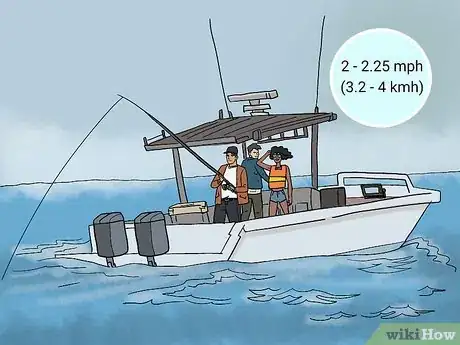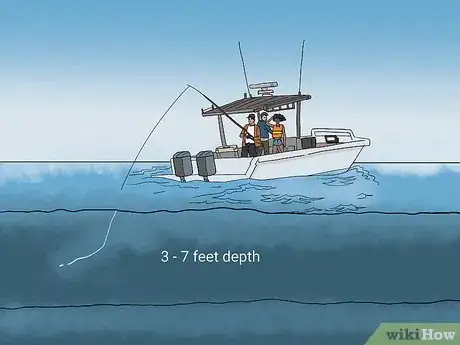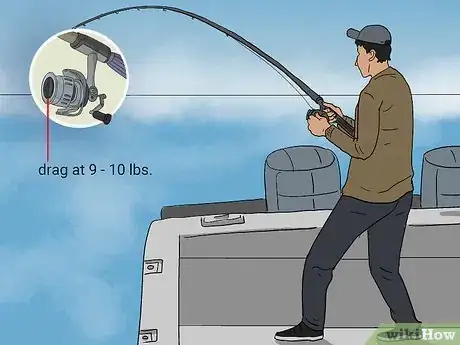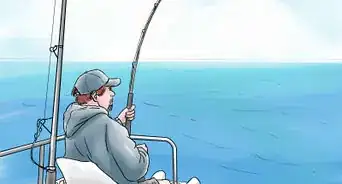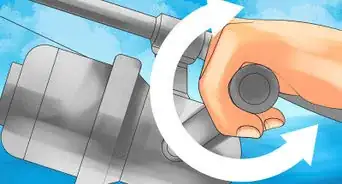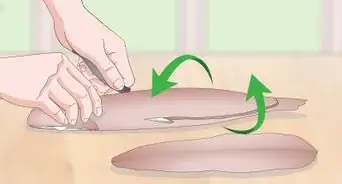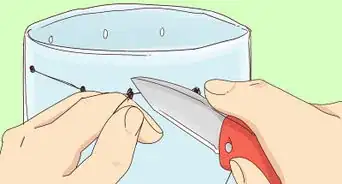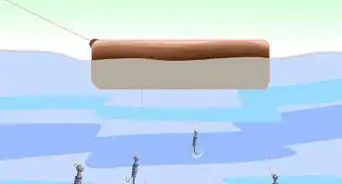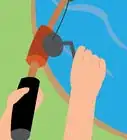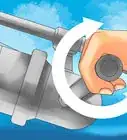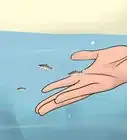wikiHow is a “wiki,” similar to Wikipedia, which means that many of our articles are co-written by multiple authors. To create this article, 31 people, some anonymous, worked to edit and improve it over time.
There are 7 references cited in this article, which can be found at the bottom of the page.
wikiHow marks an article as reader-approved once it receives enough positive feedback. This article received 15 testimonials and 96% of readers who voted found it helpful, earning it our reader-approved status.
This article has been viewed 737,216 times.
Learn more...
Striped bass are a perciform fish native to the Atlantic coast of North America, from Florida to Nova Scotia. They are a migratory fish that move between freshwater and saltwater.[1] The striped bass (or "striper") is popular in sport fishing—the largest specimen ever caught weighed in at 81.8 pounds (37.1 kg). Striped bass can be a little tricky to catch, as they are constantly on the move and behave somewhat unpredictably. As a result, many fishermen argue over the best methods for catching them. However, with the right equipment and few simple techniques, you can improve your chances of hooking a striped bass.
Steps
Using the Right Equipment
-
1Use a fish-finder. Having a boat equipped with a reliable fish-finder will certainly help in your pursuit of big striped bass.
- Having a firm understanding of how to operate your fish-finder will aid you in locating a productive area in which striped bass have gathered. Therefore it is recommended that you read the owner's manual thoroughly before using.[2]
- Striped bass can be unpredictable—they can be found at different locations and different depths depending on the weather, time of year and even the time of day. Using your fish-finder will help you to determine the depth at which the bass are holding, which will allow you to present the bait at that exact depth and give you the best chance of actually catching a striped bass.
-
2Choose the right bait. Striped Bass are opportunistic feeders who may be caught using a wide range of bait.
- Live bait such as herring, menhaden, mackerel, eels, squid, clams, anchovies, bloodworms, shad, nightcrawlers and sandworms all make great bait for striped bass fishing.[3] You can find these baits at just about any local fishing bait and tackle shop.
- The type of bait that will bring you the most success will depend on the location you intend to fish in. If you're unfamiliar with the body of water you'll be fishing, consult with a local bait and tackle shop to find out what type of bait they recommend.
- You can also catch striped bass using a lure that resembles the forage base in the area where you'll be fishing. These lures can be made from plastic, wood, metal, resins or rubber.
Advertisement -
3Choose your rod, reel and tackle. You should be able to catch striped bass with almost any rod and reel, provided it's heavier than a light spinning outfit.
- The type of rod you use will depend on type of fishing you intend to do. Will you be fishing in freshwater or saltwater? Will you be fishing on a boat? Or will you be fishing from the surf or on a jetty, bridge or pier? Will you be chunking bait, or using a lure? The answers to these questions will determine the correct weight, size and flexibility for your rod.[4]
- The type of reel you use is arguably more important than the rod -- a saltwater spinning reel is a good option, as long as it's sturdy enough to pull in a 20 to 25 pounds (9.1 to 11.3 kg) fish.
- In terms of line, you should be using a 10 to 20 pounds (4.5 to 9.1 kg) test monofilament line (though some people prefer heavier lines for catching bigger fish). The hook should be nice and sharp and there should be a minimum of 1⁄2 inch (1.3 cm) between the point and the shank, to avoid catching undersized bass.
-
4Look for optimal fishing conditions. Although striped bass can be caught all year round, in almost any condition, you can increase your chances of successful fishing if you understand the striper's behavior patterns.
- Striped bass are migratory fish who prefer water temperatures between 45 and 65 °F (7 and 18 °C). Therefore, if the water temperature goes above or below this range, you are unlikely to find any striped bass, as they will have migrated to warmer or cooler waters.
- The temperature may also affect the location of the fish within the water. On a hot sunny day, the striped bass may dive to depths as low as 40 feet (12 m) to avoid the heat and find more suitable temperature and oxygen levels. Whereas, on a cooler day, you might find them just a foot or two below the water's surface.
- Stripers are more prone to feeding when there is water movement due to changing tides or a strong breeze. This is due to the fact that water movement stirs up sediment, which attracts bait fish (who feed on the sediment). In turn, the feeding bait fish attract the stripers. In addition, they are more likely to bite when the temperature of the water has recently fluctuated.
- Striped bass tend to feed most actively at dusk and dawn, where they can hunt smaller fish under the cover of darkness. Therefore, you may have a higher rate of success if you fish at these times.
Live Eel Fishing
-
1Consider why you should use live eels. Fishing live eels is an exciting and effective ways of landing big striped bass up to and above the 40 lb (18 kg) mark. On Cape Cod Bay in particular, live eels account for many big striped bass each spring, summer and fall.
- Live eels can be used to fish for bass in deep water. They can help you to catch larger fish, as the biggest striper fish tend to lurk near the bottom.
- Live eels can be fished many different ways. One of the most popular and easiest methods is to fish live eels with a medium-light or medium-action rod.
-
2Make sure to store the eels under the right conditions. Place the eels in a cooler with a plastic ice block and a damp burlap sack.
- This keeps the eels moist and cool. The ice also has the advantage of slowing down the eel's metabolism, which makes them easier to handle.
- Don't submerge the eels in water, as they will deplete the oxygen levels and eventually drown.[5]
-
3Locate the bass. When fishing from a boat, use your sonar to first locate an area where striped bass have congregated.
- When cruising at a higher speeds, striped bass will appear as small orange blotches on most sonar screens. It's easy to miss these marks so be sure to keep a keen eye on the sonar.
- Depending on the wind and tide, setup a drift that will bring the boat through the area in which striped bass have gathered.
-
4Hook the eels. Eels are slithering, squirming creatures, so they can be difficult to handle and hook.
- Use a burlap sack or even a cotton sock to hold the eel, as this will give you a better grip. Hold the eel around its neck in order to hook it. Use circle hooks to avoid gut hooking bass.
- Hook the eel in one of two ways—either pass the hook through the top of the eel's mouth and out one of its eyes, or place the hook as deeply into the eel's mouth as possible and pass it through the bottom of its throat.
- The former method hooks the eel more securely but runs the risk of accidentally killing it, while the latter method is less secure but keeps the eel alive for longer and makes the hook appear less obvious.
-
5Cast the eel out. When casting your eel out, go easily at first until you find the sweet spot -- you don't want to rip out the hook.
- Give the eel a few seconds to reach the bottom—depending on the strength of the current and depth of the water—before you start to slowly reel it in. You may need to add up to 1/2 ounce of weight in the form of a rubber core sinker if the tide and wind is particularly strong.
- Start reeling at a very slow rate of 3 to 5 seconds per revolution—you want the eel to do most of the work for you.
-
6Reel in the striped bass. As soon as you feel the bass grab the eel, bow the fishing rod til it's parallel with the water.
- This will prevent the striper from feeling the tension in the eel and becoming spooked. However, if you’re using circle hooks, you should reel the line in at a constant rate in order to hook the fish.
- You can set the hook as soon as the line goes taut and reel the fish in immediately, or you can allow the fish to run for 5 to 10 seconds (keeping the line slack) before setting the hook.[6]
Tube and Worm Trolling
-
1Know when to use the tube and worm technique. One of the easiest and most effective ways for new striper fishermen (and fisher-women!) to catch keeper-size striped bass is to learn how to troll the tube and worm.
- When trolled slowly, the colored tube imitates a large sandworm or a swimming eel—two of the striped bass's favorite delicacies.
- This method works best when fishing in shallow, flat waters, with temperatures above 55 °F (13 °C).
-
2Tip the tube's hook with a live sandworm or herring strip. This is very important, as tubes fished without bait rarely catch bass.
- The fresh bait helps to give the tube an inviting scent, which will encourage the striped bass to come closer and investigate.
- Never fish with old or spoiled bait—the stripers will ignore it and you'll end up hooking a sand shark or skate instead.
- Consider adding a stinger hook to the tube to help prevent short strikes and lost bass
-
3Troll at the correct speed. A speed of 2–2.5 mph (3.2–4.0 km/h) is the most effective for trolling the tube.
- This mimics the natural swimming speed of an eel in the water, making the bait seem more realistic.
- It may feel very slow, but be patient—catching a large striped bass is worth it!
-
4Keep the bait at the right level. Tube and worm trolling works best in water 3 to 7 feet (0.9 to 2.1 m) in depth, though it's possible to fish as deep as 20 feet (6.1 m).
- Let the line out slowly, keeping it taut, until you feel the rig bouncing off the bottom. Reel the line in one or two turns, to keep the rig just above the bottom.
- The amount of colors of lead core trolled behind the boat can help you to determine the depth at which the tube and worm is being trolled. For example, if bass are holding at 15 feet (4.6 m), then 3 colors (5 feet (1.5 m)/color) is used to reach the bass.
- Try to slowly weave the tube forward and back on opposite 45 degree angles—this helps the movement of the bait to appear more natural.
-
5Set the drag at 9–10 pounds (4.1–4.5 kg) for the strike. Keep the boat moving forward in the initial moments after a strike in order to achieve a good hook set.
Expert Q&A
Did you know you can get expert answers for this article?
Unlock expert answers by supporting wikiHow
-
QuestionIs it necessary to use live bait? Can we use artificial bait?
-
QuestionAre there any striped bass in American rivers?
 Community AnswerYes, there are striped bass in some American rivers.
Community AnswerYes, there are striped bass in some American rivers. -
QuestionHow do I get the bait to the bottom?
 Community AnswerAdd a weight to the line and make sure you have enough line to reach the bottom. Some baits are heavy enough on their own.
Community AnswerAdd a weight to the line and make sure you have enough line to reach the bottom. Some baits are heavy enough on their own.
References
- ↑ https://www.mass.gov/service-details/learn-about-striped-bass
- ↑ https://www.boats.com/how-to/how-to-use-a-fishfinder-advanced-tips-techniques/
- ↑ http://www.striperspace.com/live_bait.html
- ↑ http://www.stripers247.com/Fishing-Rod-Selection.php
- ↑ http://www.striped-bass.com/striper-fishing/index.php/articles/14/74-fishing-live-eels
- ↑ http://www.stripersurf.com/eels.html
- ↑ https://reelgame.com/bass-fishing-at-night/
About This Article
To catch striped bass, equip your boat with a fish-finder and try to go out on the water at dawn or dusk, when striped bass are the most active. Use a heavy fishing rod with a light spinning outfit and 10 to 20 pound fishing line, and go for live bait such as herring, eels, bloodworms, or sandworms for the best results. Trolling slowly with a worm is one of the best ways to hook a striped bass! For tips on fishing with live eels, read on!
